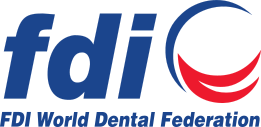Caries management with Silver Diamine Fluoride
Context
Silver Diamine Fluoride (SDF) application is a minimally invasive treatment for caries, and it possesses both antimicrobial and remineralizing properties. Its application (38% concentration) effectively arrests dental caries progression without adversely affecting the dental pulp. This non-restorative approach of caries management is simple, non-invasive and cost-effective. Additionally, it does not generate aerosols, thus minimizing the risk of cross-infection. SDF therapy is versatile, successfully arresting caries in both primary and permanent teeth, making it suitable foruse in dental clinics, community health programmesand remote settings. Furthermore, oral health professionals can be trained to administer SDF under the supervision of dentists, thereby expanding its accessibility. However, dentists should first diagnose cavitated dentine lesions before SDF is used to arrest carious lesions, especially when the lesions are deep and close to the dental pulp. It offers benefits for young children, older adults, patients who have undergone head-neck radiotherapy and those with special care needs who may not tolerate traditional restorative treatments.
Scope
FDI developed this policy statement to support the use of SDF as an effective minimally invasive treatment option for managing dental caries.
Definition
Minimally invasive treatment in dentistry represents a holistic, team-based approach focused on preserving long-term oral health through preventive, patient-centred, behaviour-related care plans, that incorporate behavioural guidance and attentive management of patients' needs, desires and expectations.
The concept of minimally invasive treatment for dental caries management is to conserve remineralizable and intact tooth tissue to help retain teeth throughout life. Tooth tissue should not be removed unnecessarily. Its key components include early detection of lesions with caries risk assessment, remineralization of demineralized enamel and dentin, proactive measures to maintain healthy teeth, customized recall schedules, minimally invasive operative techniques to preserve tooth structure, and repair rather than replace defective restorations.
Principles
-
Prioritizing minimally invasive treatments for dentistry: to maintain oral health and effectively manage dental caries while reducing the need for invasive treatments.
-
Personalized approach of dental care: dental care that emphasizes individualized treatment and patient-centered strategies, considering their age, health status, and personal circumstances.
-
Accessibility and affordability: dental treatment should be accessible and affordable for all populations, particularly for vulnerable groups such as young children, older adults, and individuals with special needs.
-
Evidence-based practice: dental practices should be grounded on the best available scientific evidence.
Policy
FDI World Dental Federation supports the:
-
Adoption of SDF as a minimally invasive treatment strategy for managing dental caries.
-
Use of SDF for managing dental caries in vulnerable populations, such as young children, older adults, and individuals with disabilities, and residents of facilities with poor access to dental care and those in remote regions.
-
Integration of SDF use for dental caries management (prevention and treatment) in diverse settings, encompassing dental clinics, community services and remote locations.
-
Ongoing research and development to refine the use of SDF in clinical care, enhance its efficacy and cost-effectiveness in management of dental caries, and explore options to reduce its staining effect.
-
Inclusion of education and training on the use of SDF in dental school curricula appertaining minimally invasive approaches in the management of dental caries.
-
Obtaining informed consent before treatment because SDF can cause black or brown stains on teeth, particularly in areas of dental decay, due to the silver ions reacting with the demineralized tooth structure.
Clinical indications
SDF is indicated for active cavitated carious lesions not encroaching on the pulp, especially where:
- Behavioural or medical factors complicate restorative treatment.
- Access to dental care is limited.
Safety
A territory-wide community service in Hong Kong performed more than 230,000 SDF therapy on children aged 3 to 6 years with no significant adverse effects. A laboratory study reported that the topical application of a 38% SDF solution delivered approximately 50% less fluoride than a 5% NaF varnish.
Keywords
Dental caries, prevention, fluoride, caries management, minimally invasive treatment, oral health policy.
Disclaimer
The information in this Policy Statement was based on the best scientific evidence available at the time. It may be interpreted to reflect prevailing cultural sensitivities and socio-economic constraints.
References
- American Dental Association. Evidence-based clinical practice guideline on nonrestorative treatments for carious lesions: A report from the American Dental Association. Available from: https://pubmed.ncbi.nlm.nih.gov/30261951/ [Accessed 6 October 2025].
- American Dental Association. Silver Diamine Fluoride. Available from: https://www.ada.org/resources/ada-library/oral-health-topics/silver-diamine-fluoride[Accessed 6 October 2025].
- Crystal YO, Janal MN, Yim S, Nelson T. Teaching and utilization of silver diamine fluoride and Hall-style crowns in US pediatric dentistry residency programs. Journal of American Dental Association 2020;151(10):755-63.
- FDI World Dental Federation. Minimal Intervention Dentistry (MID) for Managing Dental Caries. Available from: https://www.fdiworlddental.org/minimal-intervention-dentistry-mid-managing-dental-caries[Accessed 6 October 2025].
- Fung MHT, Duangthip D, Wong MCM, Lo ECM, Chu CH. Randomized Clinical Trial of 12% and 38% Silver Diamine Fluoride Treatment. Journal of Dental Research. 2018;97(2):171–178. Available from: doi: 10.1177/0022034517728496 [Accessed 6 October 2025].
- Gao SS, Amarquaye G, Arrow P, Bansal K, Bedi R, Campus G, et al. Global Oral Health Policies and Guidelines: Using Silver Diamine Fluoride for Caries Control. Frontiers in Oral Health. 2021;2:685557.
- World Health Organization. Model List of Essential Medicines – 22nd List, 2021. Geneva: World Health Organization; 2021 (WHO/MHP/HPS/EML/2021.02). Licence: CC BY-NC-SA 3.0 IGO.
- Zheng FM, Yan IG, Duangthip D, Gao SS, Lo ECM, Chu CH. Silver diamine fluoride therapy for dental care. Japanese Dental Science Review. 2022;58:249-257.
- The University of Hong Kong Faculty of Dentistry. Jockey Club Children Oral Service Report. Available from: https://facdent.hku.hk/download/publications/2023-jc.pdf [Accessed 6 October 2025].
- Yan IG, Zheng FM, Gao SS, Duangthip D, Lo ECM, Chu CH. Fluoride Delivered via a Topical Application of 38% SDF and 5% NaF. Int Dent J. 2022;72(6):773-778. Accessible from: 10.1016/j.identj.2022.03.004 [Accessed 6 October 2025].
